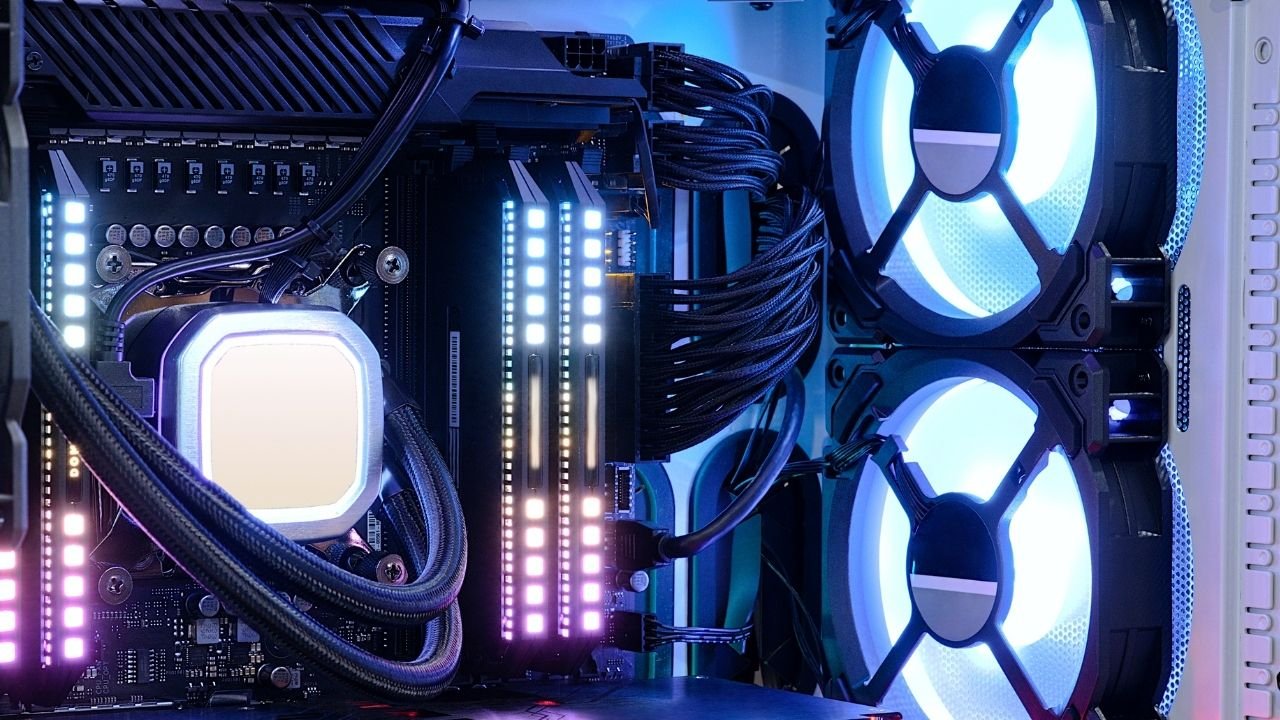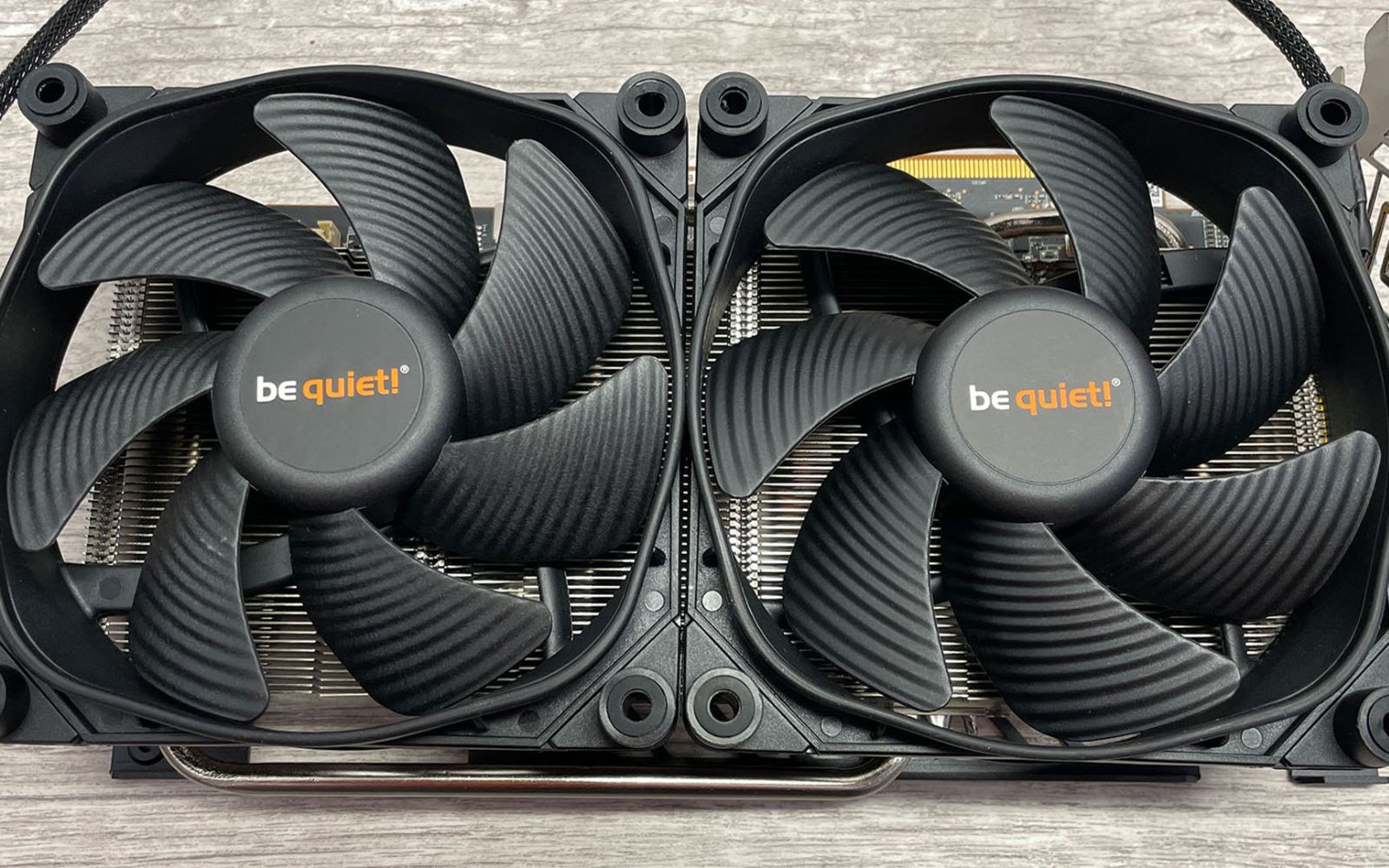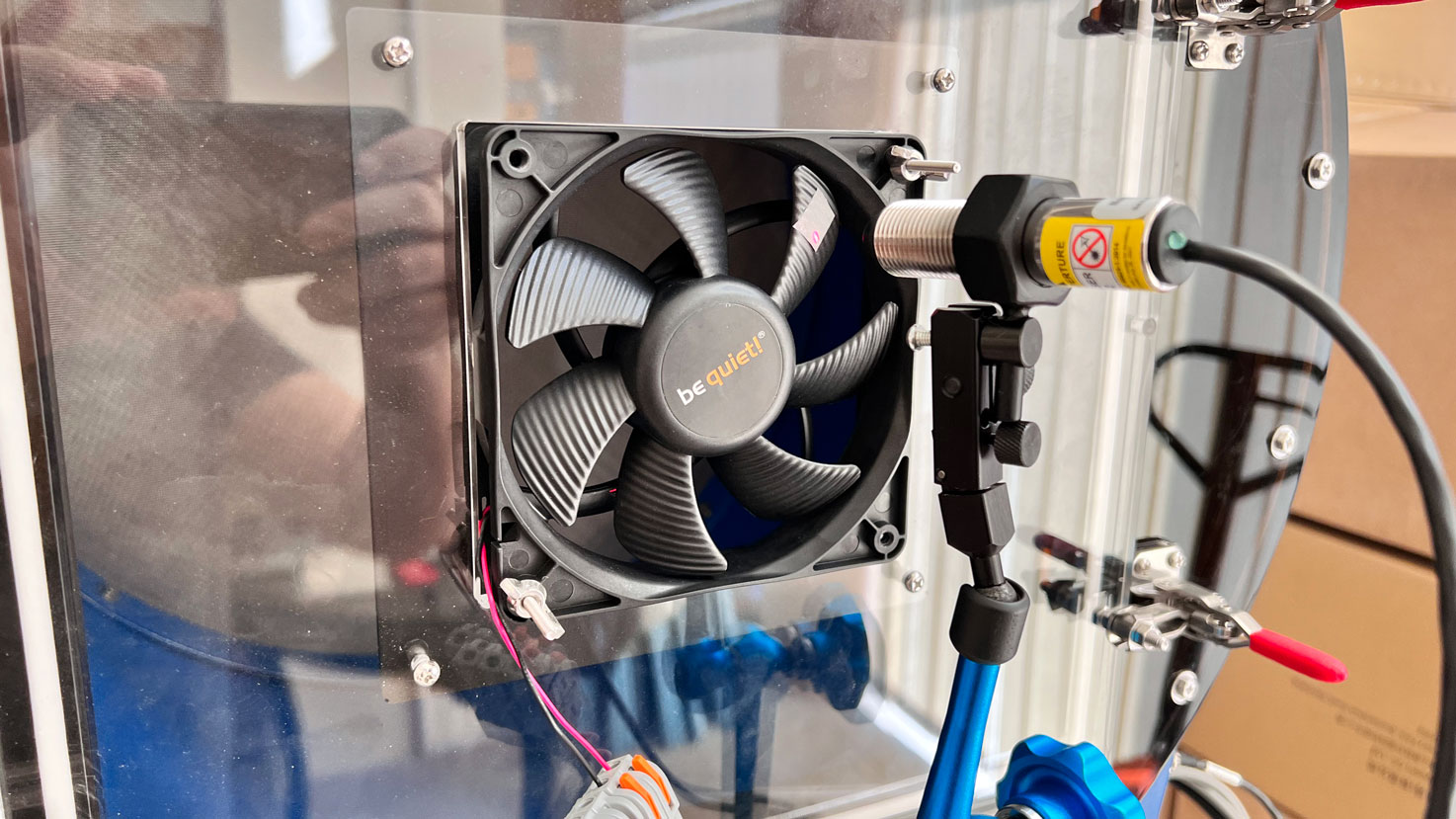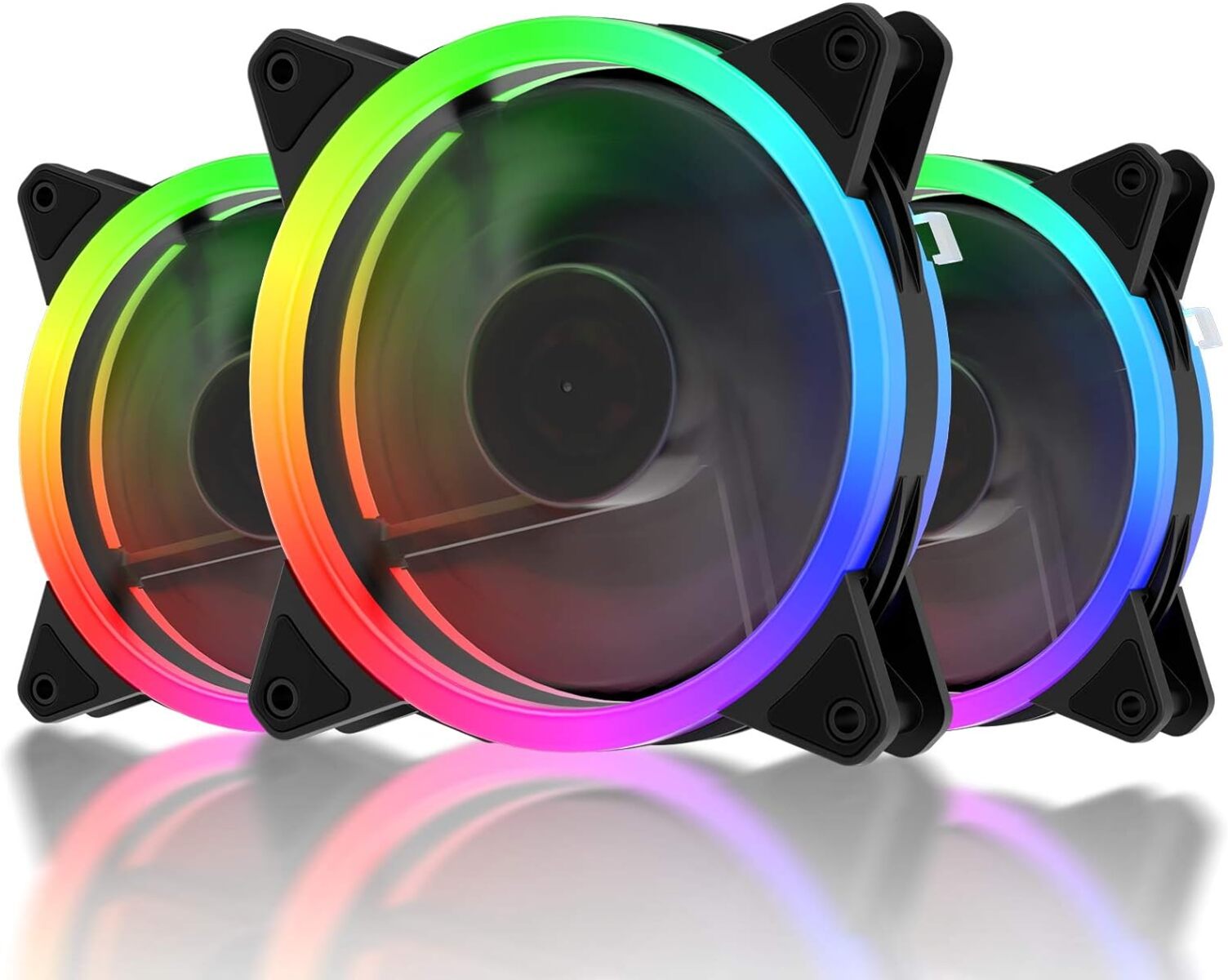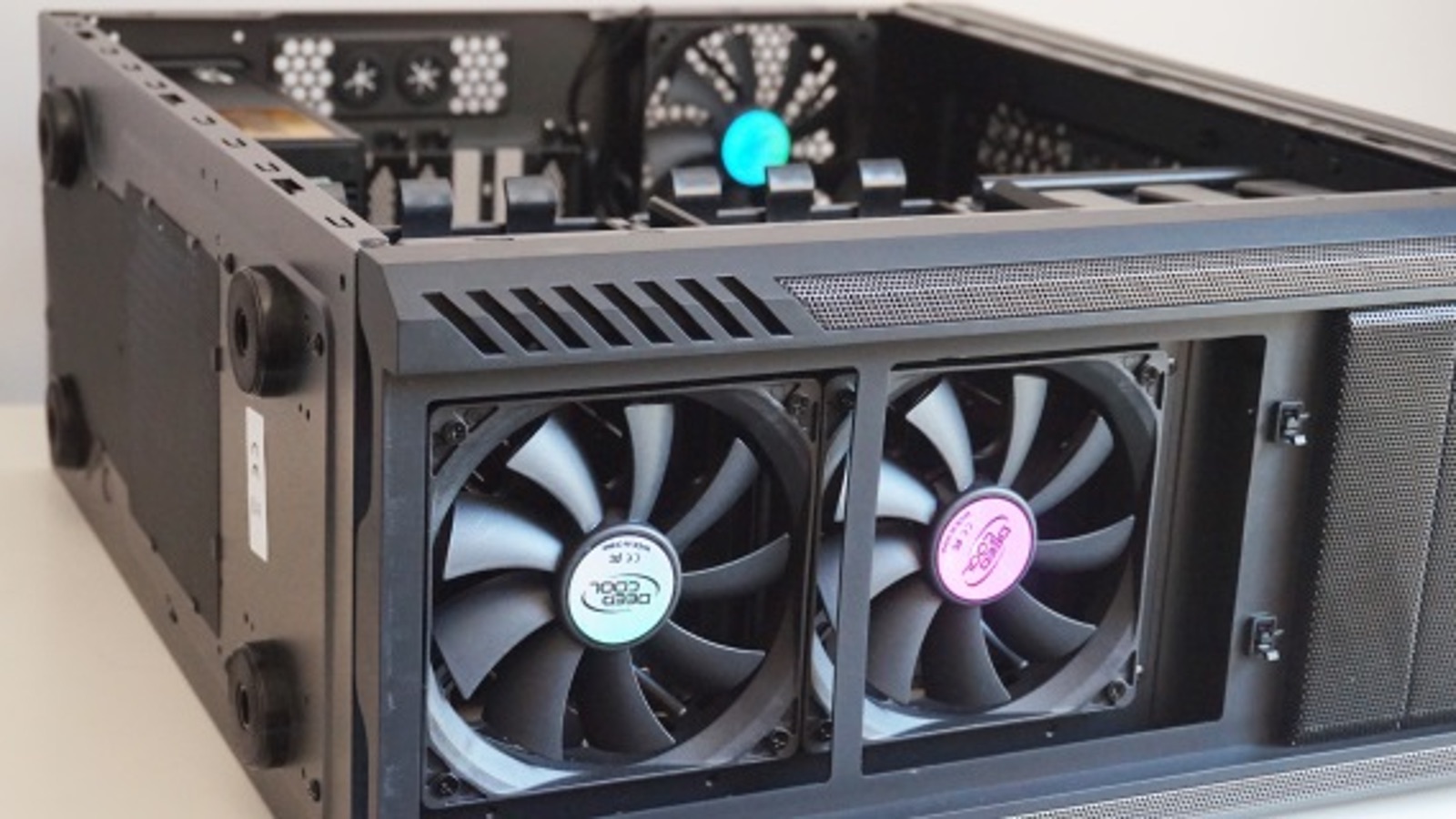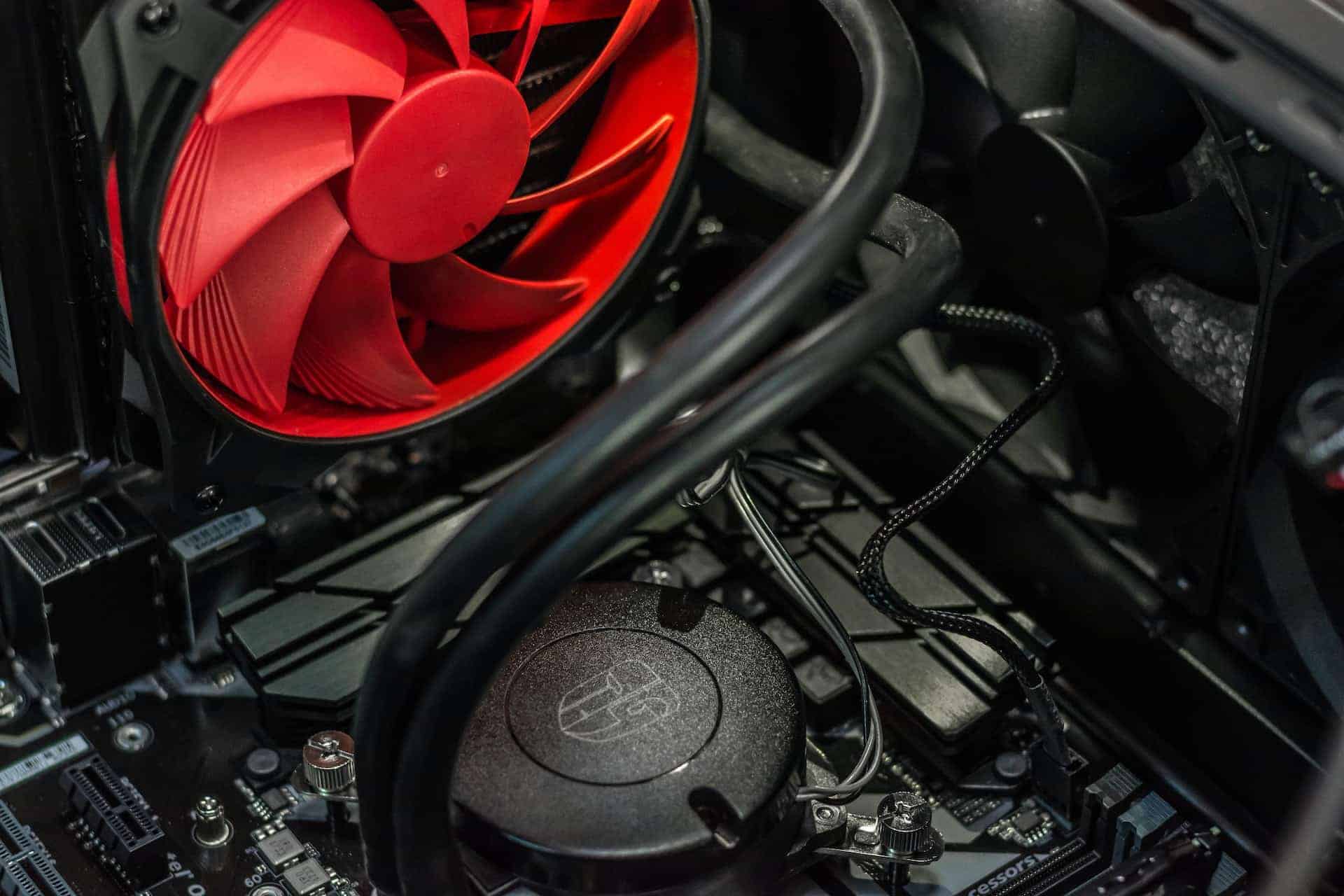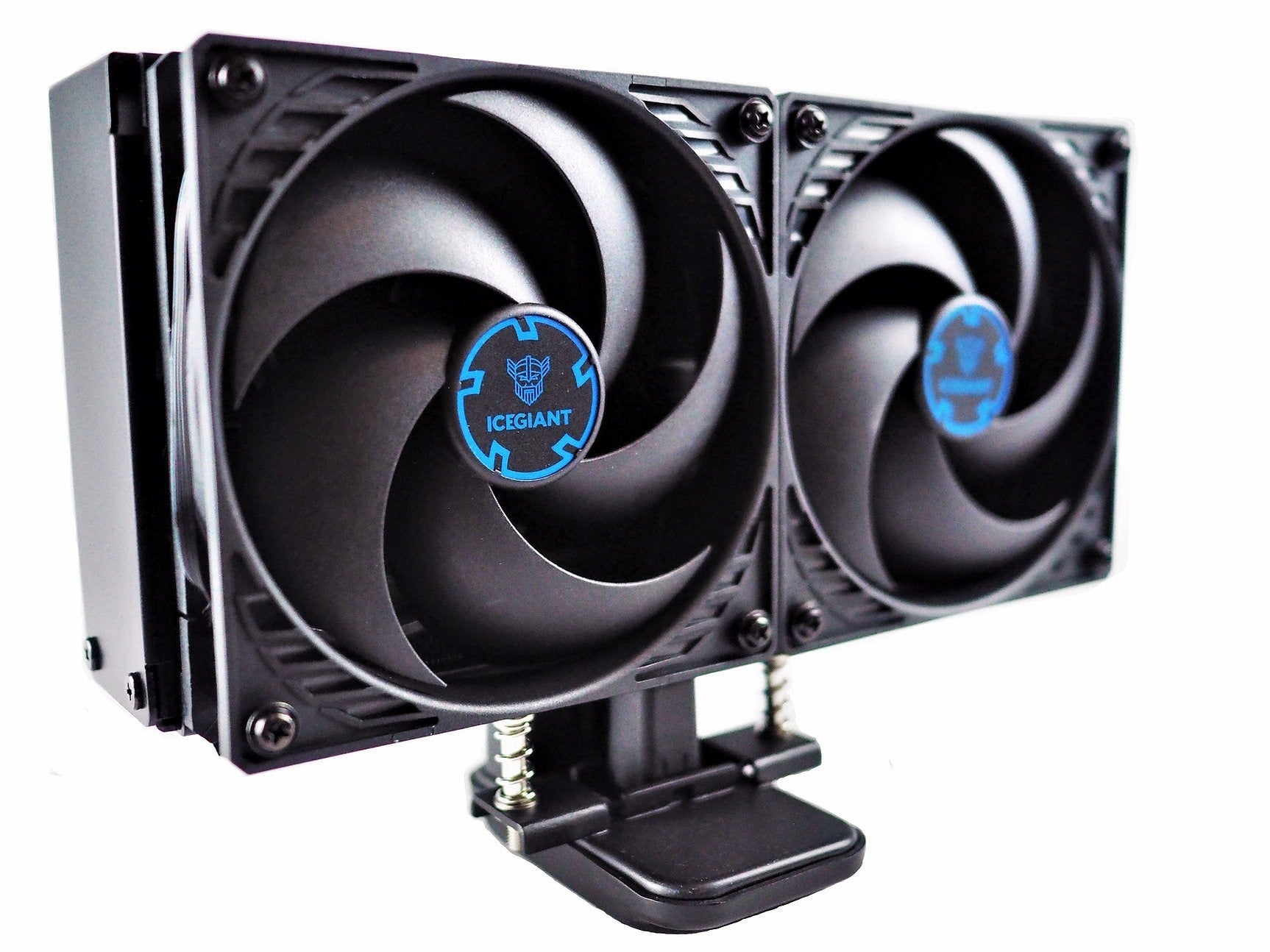Introduction
When it comes to building a PC, choosing the right components is paramount for optimal performance and longevity. While the CPU, GPU, and RAM often steal the spotlight, it is equally important to pay attention to the cooling system in order to maintain stable temperatures and prevent overheating. One crucial component in the cooling system is the PC case fan.
PC case fans play a vital role in maintaining a balanced airflow within the case, expelling hot air and bringing in cool air to keep the components running efficiently. However, with a wide variety of fans available on the market, it can be overwhelming to decide which type of case fan is the best fit for your PC.
In this article, we will explore the factors to consider when choosing a PC case fan, including size/compatibility, airflow, noise level, static pressure, bearing type, RGB lighting, fan speed control, and price. By understanding the importance of each of these factors, you can make an informed decision and select the ideal case fan for your needs.
Please note that there is no one-size-fits-all solution, as the best case fan for you will depend on several factors, such as the size of your PC case, the components you are using, and your personal preferences. Let’s dive into the details and find the perfect case fan to keep your PC running smoothly.
Size/Compatibility
One of the first things to consider when selecting a PC case fan is its size and compatibility with your PC case. Case fans come in various sizes, commonly measured in millimeters (mm), with the most common sizes being 120mm and 140mm.
It is essential to choose a fan that fits properly within your PC case. Most cases will have mounting points for specific fan sizes, so it’s crucial to check the specifications of your case to determine the compatible fan sizes. Installing a fan that is too large may result in clearance issues, while a fan that is too small may not provide sufficient airflow.
In addition to physical compatibility, it is also essential to consider the number of fan mounts available in your case. Larger cases typically have more fan mounting points, allowing for better airflow and cooling potential. Smaller cases may have limited space for fan installation, so you’ll need to choose a fan that fits within the available mounts.
When purchasing fans, it is worth considering fans with different thicknesses. Thicker fans, often referred to as “thick” or “double thick,” typically offer more airflow but may require more clearance within the case.
Furthermore, some case fans are designed specifically for certain parts of the PC case, such as CPU coolers or radiators. These fans are typically labeled as “PWM” (Pulse Width Modulation) or “Static Pressure” fans. They are optimized for better airflow through tight spaces or pushing air through dense heatsinks.
Overall, choosing the right size and compatible fan is essential to ensure optimal performance and airflow within your PC case. By carefully considering the dimensions and compatibility of the fan, you can avoid any fitting issues and maximize the cooling potential of your PC.
Airflow
Airflow is a critical factor to consider when selecting a PC case fan. The ability of a fan to move a substantial amount of air is essential for efficient cooling.
When evaluating airflow, two main specifications should be considered: airflow volume and airflow direction. Airflow volume is typically measured in cubic feet per minute (CFM) and indicates the amount of air the fan can move in a given time. A higher CFM value generally means better cooling performance, although it can also result in increased noise.
Airflow direction refers to whether the fan is designed to exhaust hot air out of the case or intake cool air into it. Most fans are designed to exhaust air, so it is essential to have a proper balance between intake and exhaust fans to maintain positive air pressure within the case. Positive air pressure prevents dust from entering through unfiltered vents and helps expel hot air from the case effectively.
To optimize airflow, consider the placement and orientation of fans within your PC case. It is advisable to have at least one intake fan at the front of the case to bring in fresh air, and one exhaust fan at the rear or top to expel hot air. The strategic placement of additional fans can further improve airflow and cooling efficiency.
Furthermore, some case fans feature additional design elements that enhance airflow. These can include fan blades with curved designs or grooves that help direct air more efficiently. Other fans may have a higher number of fan blades or larger blade surface area, which can also contribute to improved airflow.
It is important to note that higher airflow typically results in increased noise levels. If noise is a concern for you, consider opting for fans with a lower noise rating or ones that offer adjustable fan speed control so you can find the optimal balance between cooling performance and noise levels.
Overall, paying attention to airflow characteristics when selecting a PC case fan will help ensure efficient cooling and prevent components from overheating. By choosing fans with the appropriate airflow volume and direction, you can enhance the overall performance and longevity of your PC.
Noise Level
The noise level produced by PC case fans is an important consideration, especially if you value a quiet and peaceful computing experience. The noise level of a fan is typically measured in decibels (dB), with lower dB values indicating quieter operation.
Fans with lower noise levels are generally preferred, as they help create a more serene environment while working or gaming. However, it’s essential to strike a balance between noise level and cooling performance. Fans that prioritize silence often sacrifice some airflow, which can impact the cooling efficiency of your PC.
When selecting a case fan, look for models that are specifically designed for quiet operation. These fans often feature advanced bearing designs, such as fluid or magnetic bearings, which help reduce friction and minimize noise. Additionally, fans with larger blades or lower fan speeds tend to produce less noise compared to smaller or higher-speed fans.
It’s also worth considering fan speed control options. Some case fans come with built-in fan speed controllers or support for software-based speed control. This allows you to adjust the fan speed according to your needs, balancing between cooling performance and noise level. If noise reduction is a priority, you can set the fan speed to a lower level, while increasing it when the system requires more cooling.
Another factor that contributes to fan noise is the quality of the fan itself. Lower-quality or cheaper fans often produce more noise due to vibrations and imbalances. Consider investing in reputable brands known for producing high-quality, quiet fans. These fans are typically designed to minimize vibrations and optimize airflow efficiency for quiet operation.
Lastly, keep in mind that the noise level of a fan can also be influenced by the overall configuration and setup of your PC. Ensure proper cable management and secure mounting of fans to minimize vibrations and unwanted noise.
By choosing case fans with low noise levels and considering factors such as fan speed control and overall fan quality, you can enjoy a quieter computing experience without compromising on cooling performance.
Static Pressure
Static pressure is an important factor to consider when selecting a PC case fan, especially if you have components that require effective cooling through tight spaces or dense heatsinks. Static pressure refers to the fan’s ability to push or pull air against resistance.
Components such as CPU coolers and radiators have narrow fins or tight spaces that can impede airflow. Fans with high static pressure are specifically designed to overcome this resistance and maintain proper airflow, ensuring efficient cooling of these components.
When choosing a case fan, look for models that have a high static pressure rating. Higher static pressure allows the fan to push air more effectively through restrictive spaces, promoting better cooling performance. Fans with low static pressure may struggle to deliver sufficient airflow in such situations, leading to higher temperatures and reduced cooling efficiency.
It’s worth noting that fans optimized for static pressure typically have denser and stiffer fan blades. These blades are designed to generate higher pressure at a cost of slightly reduced airflow compared to fans designed for unrestricted airflow. This trade-off is necessary to ensure effective cooling in tight spaces.
Additionally, the orientation and placement of fans can also impact static pressure. For example, fans installed as intake fans directly in front of components like CPU coolers or radiators can help maximize static pressure and improve cooling performance.
It is essential to consider static pressure requirements based on your system configuration. If you have components that rely on effective cooling through restricted spaces, opting for fans with a higher static pressure rating will ensure optimal performance. On the other hand, if your system does not have components with restrictive cooling requirements, fans with a focus on airflow may be more suitable.
Finding the right balance between static pressure and airflow is key to achieving optimal cooling performance in your PC. By selecting fans with appropriate static pressure capabilities and strategic placement, you can ensure effective cooling even in tight or challenging spaces within your system.
Bearing Type
The bearing type of a PC case fan is an essential consideration as it directly impacts the fan’s lifespan, noise level, and performance. Different bearing types offer varying levels of durability, smooth operation, and noise reduction.
The most common bearing types found in case fans are sleeve bearings, ball bearings, and fluid dynamic bearings (FDB). Each has its own advantages and considerations.
Sleeve bearings are the most basic and affordable bearing type. They consist of a shaft with a sleeve around it, allowing the fan to spin. Sleeve bearings operate relatively quietly but have a shorter lifespan compared to other bearing types. They are suitable for general PC use where longevity is not a significant concern.
Ball bearings, on the other hand, are more durable and have a longer lifespan compared to sleeve bearings. They consist of small metal balls that reduce friction and allow for smooth rotation. However, ball bearing fans tend to produce more noise than sleeve bearings due to the moving parts.
Fluid dynamic bearings (FDB) are a more advanced and premium bearing type. They use a fluid lubricant to reduce friction and provide reliable, quiet operation. FDB fans have an extended lifespan and are ideal for systems where noise reduction and longevity are important factors. They are often the preferred choice for gaming or workstations that require continuous and reliable operation.
Additionally, some fans feature magnetic levitation (ML) or hydrodynamic bearings (HDB). These bearing types offer similar benefits to FDB fans, providing quiet operation, long lifespan, and improved performance. ML and HDB fans are known for their excellent balance between noise levels and cooling efficiency.
When selecting a case fan, consider the bearing type that aligns with your priorities. If noise reduction and long lifespan are crucial, investing in fans with FDB, ML, or HDB bearings is recommended. For budget-friendly options where noise level may not be a significant concern, sleeve or ball bearing fans can suffice.
It’s important to note that fan quality, design, and brand reputation also play a role in determining the overall performance and reliability, even with a specific bearing type. Therefore, it’s advisable to choose fans from reputable manufacturers known for producing high-quality products.
By understanding the different bearing types and their characteristics, you can make an informed decision to select the right case fans that meet your specific requirements for noise level, longevity, and performance.
RGB Lighting
RGB lighting has become increasingly popular in PC builds, allowing users to add a vibrant and customizable aesthetic to their systems. While RGB lighting does not directly impact the performance of a case fan, it can enhance the overall visual appeal and create an immersive gaming or workstation environment.
RGB fans offer a wide range of color options and lighting effects that can be controlled through software or hardware controls. These fans feature built-in LEDs that illuminate the fan blades, creating stunning visual effects. Some fans even allow synchronization with other RGB components in your system, such as motherboard lighting or RAM modules.
When considering RGB lighting in case fans, there are a few aspects to keep in mind. Firstly, the fan’s lighting should match your desired theme or color scheme. Look for fans that offer a wide spectrum of colors or specific color options that align with your preference.
Secondly, consider the control options available for the RGB lighting. Some fans come with dedicated software that allows for seamless control of the lighting effects, such as adjusting colors, brightness, and animation patterns. Others may have hardware controllers that offer manual control at the touch of a button.
It’s also important to note that fans with RGB lighting may require additional power connections. These connections can range from simple fan headers on the motherboard to dedicated RGB headers or external power sources. Ensure that your system has the necessary connectors to support the RGB fans you plan to install.
While RGB lighting can enhance the aesthetics of your PC, it’s important to bear in mind that they may add some additional cost. RGB fans are often slightly more expensive than non-RGB fans due to the added lighting components.
Ultimately, the decision to invest in RGB fans boils down to personal preference and the desired visual impact. If you enjoy customizing your system and creating a visually stunning setup, RGB fans can be a great addition. However, if aesthetics are not a top priority or budget is a concern, traditional non-RGB fans can still offer excellent cooling performance.
Remember to consider your overall PC build and whether RGB fans align with your desired theme or style. Balancing visual appeal with performance and cost will help you make an informed decision when choosing case fans with RGB lighting.
Fan Speed Control
Fan speed control is an important feature to consider when selecting PC case fans. The ability to adjust the fan speed allows you to find the perfect balance between cooling performance and noise level based on your specific needs and preferences.
Fixed speed fans operate at a constant speed set by the manufacturer. While they provide a simple and straightforward solution, they do not offer the flexibility to adjust the fan speed according to the system’s cooling requirements. Fixed speed fans are typically budget-friendly options suitable for systems with stable and consistent thermal conditions.
On the other hand, fans with adjustable fan speed provide more control over cooling performance and noise levels. These fans have built-in fan controllers or support for software-based control, allowing you to adjust the fan speed to match the system’s demands. By reducing the fan speed when cooling demands are low, you can achieve quieter operation. Conversely, increasing the fan speed during heavy loads ensures optimal cooling performance.
Some fans offer a range of speed settings, while others provide continuous speed control allowing for precise adjustment. It’s important to note that fans with adjustable speed often come with a higher price tag compared to fixed speed fans.
When considering fan speed control, also assess the available control options. Fans with hardware-based control may come with built-in switches or knobs on the fan itself, allowing for quick and easy adjustments without the need for software. On the other hand, fans with software-based control require a compatible motherboard or software application for customization.
It’s worth mentioning that fan speed control is closely related to the noise level of the fan. Lowering the fan speed reduces noise but may also impact cooling performance. Therefore, it’s important to strike a balance between noise reduction and adequate cooling.
Additionally, fan speed control can be influenced by the fan header connections on your motherboard. Ensure that your motherboard supports the appropriate fan headers and offers the necessary control options for the fans you plan to install.
By selecting PC case fans with adjustable fan speed control, you can fine-tune the cooling performance and noise levels to meet your specific requirements. This ensures optimal cooling efficiency while maintaining a quieter and more comfortable computing environment.
Price
Price is a crucial consideration when selecting PC case fans, as it ultimately determines the affordability and value for money of the product. The price of case fans can vary significantly depending on various factors, including brand reputation, fan features, and build quality.
Generally, budget-friendly case fans offer basic functionality and reliable performance without breaking the bank. These fans often prioritize airflow and cooling performance over additional features like RGB lighting or adjustable fan speed control. If you are on a tight budget or simply require a reliable cooling solution, these fans can be a practical choice.
Mid-range case fans strike a balance between affordability and added features. They often offer a combination of good airflow, moderate noise levels, and some customization options like RGB lighting or adjustable fan speed control. Mid-range fans can be suitable for users who want a balance between performance and aesthetics without overspending.
Premium case fans are typically designed with advanced features, superior build quality, and cutting-edge technologies. These fans often offer high airflow, low noise levels, premium bearings, and additional features like synchronized lighting and software control. If you prioritize top-notch performance, silence, and customization, investing in premium case fans can be a worthwhile choice.
When considering the price, it’s important to determine your specific needs and budget limitations. Consider the overall cost of your PC build and allocate a reasonable portion for case fans based on their importance in maintaining optimal temperatures and extending the lifespan of your components.
While it can be tempting to go for the most budget-friendly option, it’s important to strike a balance between price and quality. Cheaper fans may have lower build quality, shorter lifespan, or higher noise levels. Opting for reputable brands known for producing reliable fans can help ensure better performance and longevity.
Consider looking for customer reviews, comparing prices from different retailers, and checking for warranty information when making your decision. Remember that investing in high-quality case fans can be a worthwhile long-term investment, offering better cooling performance, durability, and an improved overall computing experience.
By carefully evaluating the price range that aligns with your budget and weighing the features and performance offered, you can make an informed decision and select the most suitable case fans for your needs.
Conclusion
Selecting the right PC case fan is crucial for maintaining optimal temperatures, extending the lifespan of your components, and enhancing your overall computing experience. By considering factors such as size/compatibility, airflow, noise level, static pressure, bearing type, RGB lighting, fan speed control, and price, you can make an informed decision and choose the ideal case fan for your needs.
Start by ensuring that the fan size is compatible with your PC case and that there are sufficient fan mounts available. Consider the airflow requirements of your system to ensure efficient cooling. Take into account the noise level of the fan, as a quieter operation can contribute to a more peaceful environment. If there are components in your system that require effective cooling through restrictive spaces, opt for fans with high static pressure. Consider the bearing type of the fan, as it can impact both durability and noise levels. If aesthetics are important to you, explore fans with RGB lighting options that can add a visually striking element to your build. Fan speed control allows you to balance performance and noise levels, so choose fans that offer adjustable speed settings if desired. Lastly, consider your budget and seek a balance between price and quality.
Remember to research reputable brands, read customer reviews, and consider warranty information when making your final decision. By selecting the right case fans and optimizing your cooling system, you can ensure the smooth operation and longevity of your PC components.
With a well-chosen PC case fan, you can create an efficient and cool-running system that not only performs at its best but also looks impressive. Take the time to evaluate your specific requirements and find the perfect balance of features, performance, and affordability. Happy computing!







